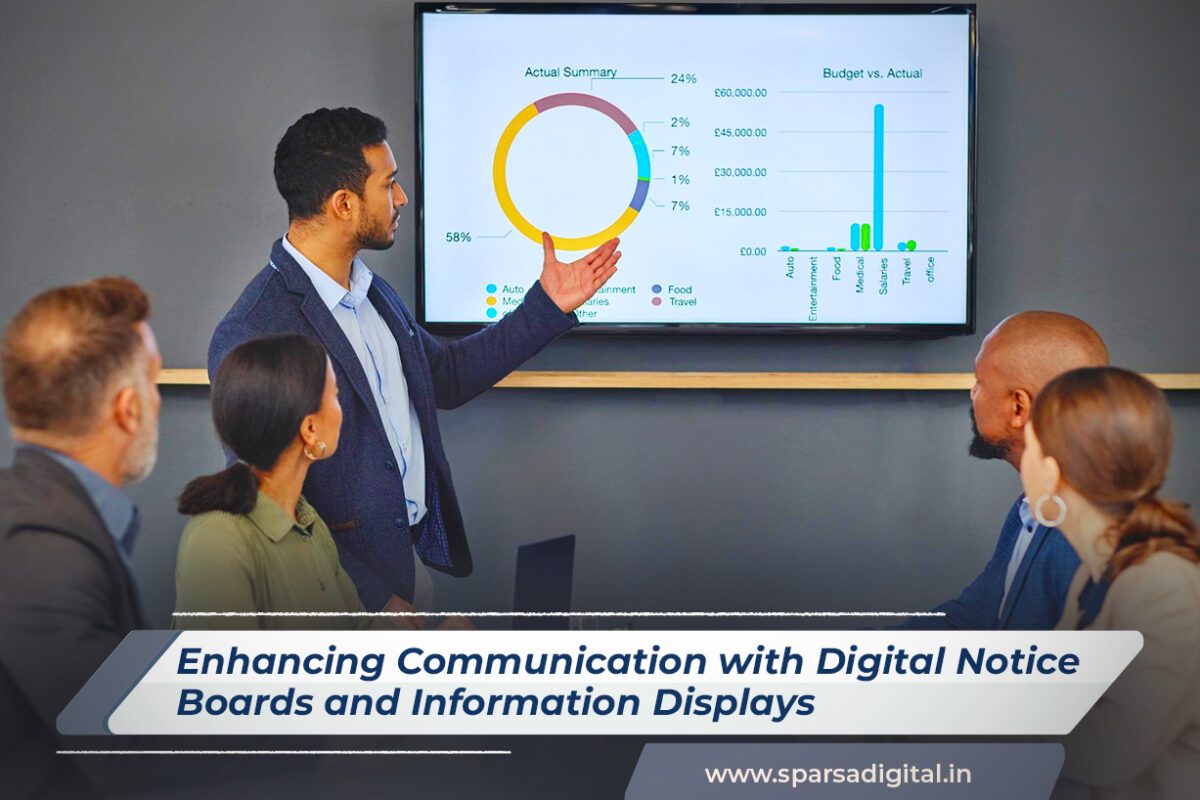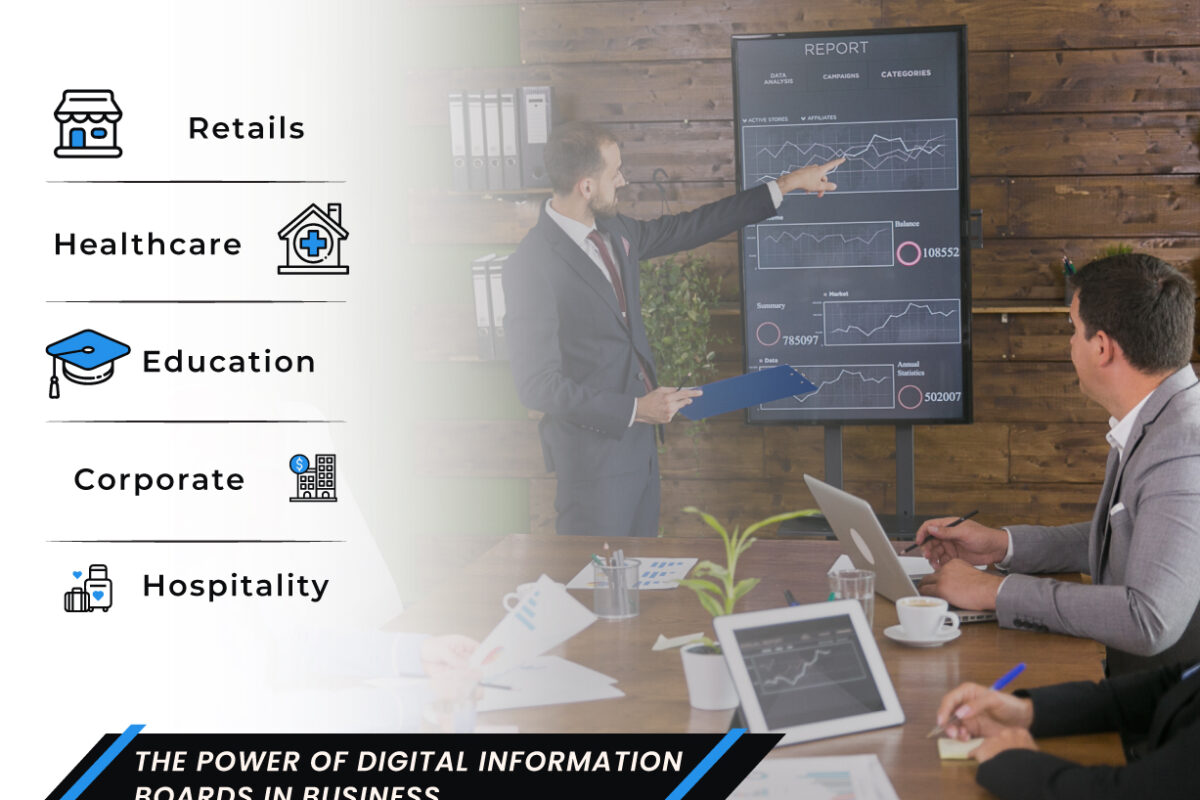In today’s fast-paced world, effective communication is paramount, especially in public spaces like schools, offices, hospitals, and transportation hubs. Traditional notice boards and information displays have long served as means to disseminate information. However, the digital age has brought forth innovative solutions in the form of digital notice boards and digital information displays. These technological advancements offer numerous benefits over their conventional counterparts, including real-time updates, dynamic content, and interactivity.
Understanding Digital Notice Boards
Digital notice boards are electronic displays that showcase information, announcements, advertisements, and other content in digital format. Unlike traditional notice boards, which rely on printed materials and manual updates, digital notice boards leverage technologies such as LCD, LED, or e-paper screens to present dynamic content. These boards are often connected to a central content management system, allowing administrators to update information remotely and in real-time.
Key Features of Digital Notice Boards
- Real-time Updates: One of the primary advantages of digital notice boards is their ability to display information instantaneously. Whether it’s schedule changes, emergency alerts, or event notifications, administrators can update content remotely and ensure that the latest information is readily available to viewers.
- Dynamic Content: Unlike static notice boards, digital displays offer the flexibility to showcase dynamic content. This includes multimedia elements such as videos, animations, and slideshows, enhancing engagement and capturing the audience’s attention more effectively.
- Remote Management: Digital notice boards can be centrally managed through intuitive software interfaces. Administrators can schedule content, organize displays by location or audience, and monitor screen status remotely, streamlining the management process and reducing operational overhead.
- Interactivity: Some advanced digital notice boards feature interactive capabilities, allowing viewers to engage with the displayed content. Touchscreen interfaces enable users to navigate through information, access additional details, or even submit feedback or inquiries directly through the display.
Applications of Digital Notice Boards
- Education Sector: Schools, colleges, and universities utilize digital notice boards to communicate announcements, exam schedules, campus events, and important notices to students, faculty, and staff. These displays also serve as interactive learning tools, facilitating student engagement and collaboration.
- Corporate Environments: In office buildings, digital notice boards are employed to convey internal communications, HR announcements, meeting schedules, and company updates to employees. Additionally, they can be used for wayfinding purposes, guiding visitors through the premises and providing directory information.
- Healthcare Facilities: Hospitals and clinics leverage digital notice boards to broadcast health advisories, appointment reminders, patient information, and emergency alerts. These displays contribute to efficient patient flow management and enhance the overall healthcare experience.
Understanding Digital Information Boards
Digital information boards, often referred to as digital signage or information displays, serve a broader purpose beyond simple announcements. These displays are designed to deliver targeted messages, advertisements, promotions, and relevant content to specific audiences in various environments. Similar to digital notice boards, they utilize advanced technologies to present content in a visually appealing and engaging manner.
Key Features of Digital Information Boards
- Content Customization: Digital information boards offer extensive customization options, allowing organizations to tailor content based on audience demographics, location, and time of day. This targeted approach ensures that messages resonate with viewers and drive desired outcomes.
- Integration with Data Sources: Advanced digital signage solutions can integrate with external data sources such as social media feeds, weather updates, news headlines, and live event schedules. This enables real-time content updates and enhances the relevance and timeliness of displayed information.
- Analytics and Metrics: Digital information boards often come equipped with analytics tools that track viewer engagement, content effectiveness, and audience demographics. By analyzing these metrics, organizations can refine their messaging strategies and optimize the impact of their digital displays.
- Multi-screen Capabilities: Digital information boards can be configured as single displays or multi-screen video walls, offering versatile deployment options to suit diverse spatial requirements and visual aesthetics. Multi-screen setups enable immersive brand experiences and high-impact storytelling.
Applications of Digital Information Boards
- Retail Environments: Retailers use digital information boards to showcase product promotions, advertisements, and branding messages to shoppers. These displays influence purchasing decisions, drive foot traffic, and create memorable in-store experiences.
- Transportation Hubs: Airports, train stations, and bus terminals deploy digital information boards to provide real-time travel information, departure schedules, wayfinding assistance, and safety instructions to passengers. These displays enhance the overall passenger experience and improve operational efficiency.
- Hospitality Industry: Hotels, restaurants, and resorts leverage digital information boards to promote amenities, special offers, event listings, and dining options to guests. These displays enhance guest satisfaction, increase revenue opportunities, and streamline communication within the hospitality environment.
Conclusion
Digital notice boards and digital information displays represent powerful tools for communication, engagement, and information dissemination in various settings. Their ability to deliver real-time updates, dynamic content, and targeted messaging enables organizations to enhance communication effectiveness, streamline operations, and create memorable experiences for their audiences. As technology continues to evolve, the potential applications and benefits of digital signage solutions will undoubtedly expand, shaping the future of communication in both public and private sectors.


